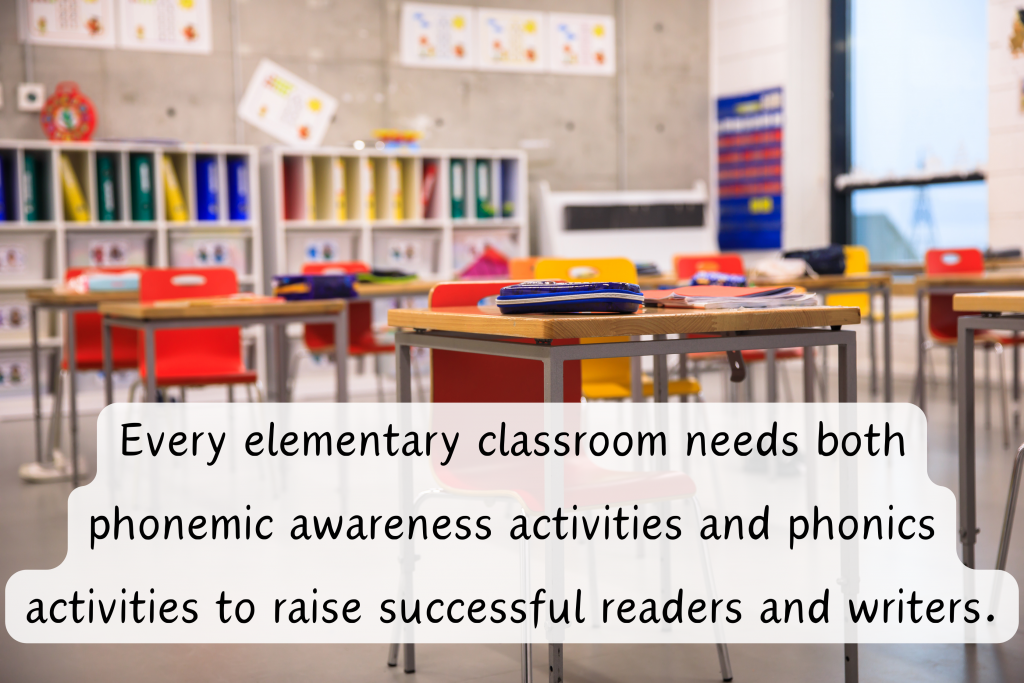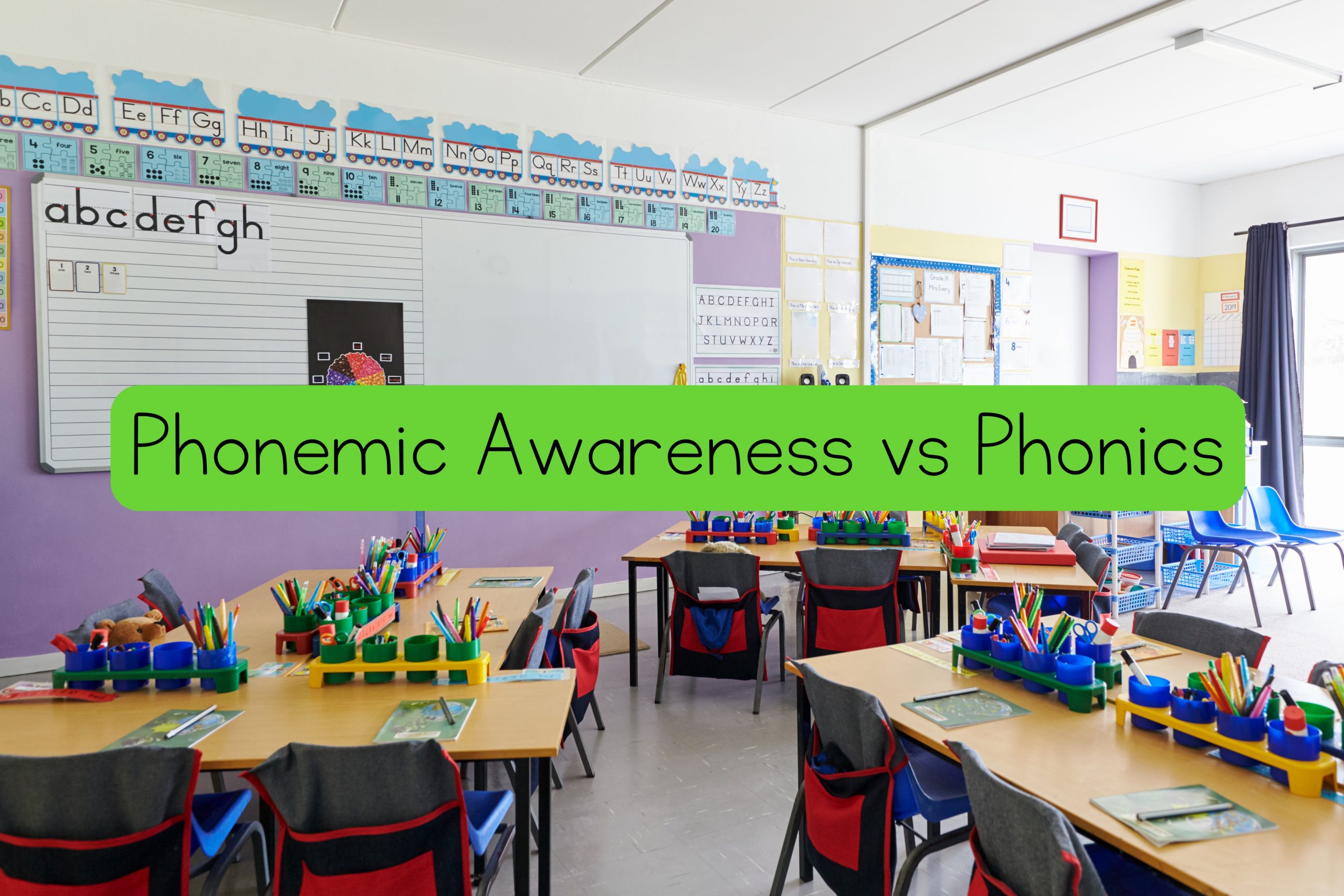What’s the difference – and why it matters for your classroom
As elementary teachers, our mission is to equip young minds with the essential tools for successful literacy development. Two critical components in this journey are phonemic awareness and phonics.
While these words might sound similar, they are different from each other and I will explain how in today’s post:

Phonemic Awareness: The Power of Sound
Phonemic awareness is the ability to recognize and manipulate individual sounds (phonemes) in spoken words.
It’s all about understanding the sound structure of our language without necessarily connecting it to written symbols.
Activities that enhance phonemic awareness include rhyming, segmenting words into sounds, blending sounds to form words, and manipulating sounds within words.
Why is Phonemic Awareness Important?
- Reading Readiness: Phonemic awareness is a precursor to reading. Children who grasp the concept of phonemes are better equipped to decode and understand words.
- Spelling Proficiency: An awareness of phonemes aids in spelling. When students can identify and manipulate sounds, they are better able to spell words accurately.
- Oral Language Skills: Phonemic awareness contributes to better oral language skills, fostering effective communication and vocabulary development.

Phonics: Bridging Sounds to Symbols
Phonics, on the other hand, involves connecting the sounds to written symbols.
It teaches the relationship between letters and sounds, helping students decode words by sounding them out.
Phonics instruction typically includes teaching letter-sound correspondences, blending sounds to read words, and segmenting words to spell them.
Why is Phonics Important?
- Decoding Skills: Phonics is a key tool for decoding unfamiliar words. It empowers students to independently read and comprehend a wide range of texts.
- Spelling Mastery: Understanding phonics rules enhances spelling accuracy. Students can apply their knowledge of letter-sound relationships to spell words correctly.
- Reading Fluency: Proficiency in phonics contributes to reading fluency, allowing students to read with speed, accuracy, and expression.

The Symbiotic Relationship: Why Both Matter
While phonemic awareness and phonics serve distinct purposes, they are interconnected and work together to create a strong literacy foundation.
Phonemic awareness sets the stage by enabling children to recognize and manipulate sounds, while phonics builds upon this foundation by connecting those sounds to written symbols.
Classroom Strategies:
- Incorporate Playful Activities: Engage students in rhyming games, word segmentation exercises, and blending activities to foster phonemic awareness.
- Interactive Phonics Instruction: Integrate systematic phonics instruction into your lessons. Use materials that emphasize letter-sound relationships and provide opportunities for students to apply their knowledge in reading and spelling.
- Differentiated Instruction: Recognize that students may enter the classroom with varying levels of phonemic awareness and phonics skills. Tailor your instruction to meet the diverse needs of your learners.




